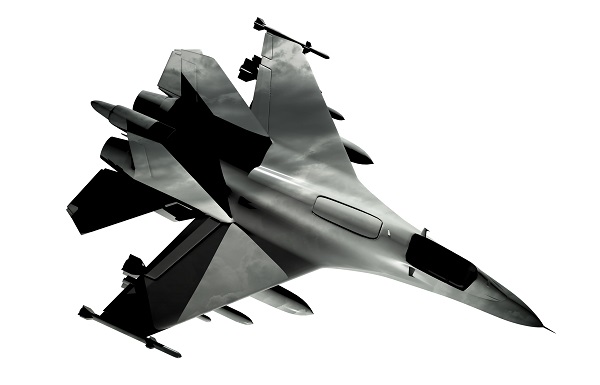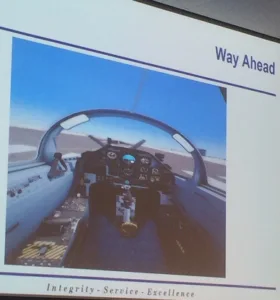Hype is everywhere in the trendy world of virtual reality. That also applies to virtual reality babble in education, where promotion always seems to outweigh actual benefit. We are forced to ask ourselves: “Is there any meat on this bone?”

“Hype is supposed to overpromise and underdeliver, not overpromise and overdeliver. Usually, it doesn’t deliver at all – it takes your money and keeps your pizza.”
-Steve Rushin
Can virtual reality actually make a difference in the educational endeavor or is it all ballyhoo and exaggeration? Have educators just drunk the VR Kool-Aid or is VR actually worth our time and attention? Recently I discovered a perfect exemplar of how VR can actually deliver on meaningful educational goals. It’s a story worth telling.

Enter center stage: Major Jonathan McPhilamy, an executive officer and director of the Air Warfare Lab at the U.S. Air Force Academy in Colorado Springs, Colorado. This fall, Major McPhilamy offered a well-attended presentation at our annual university technology conference (University of Colorado system) entitled “Everything but the Plane: Using Virtual Reality to Prepare Air Force Cadets.” McPhilamy explained their challenge and how VR is being used to address these challenges at the Air Force Academy: “Currently the United States Air Force faces a shortage of pilots to fill its ranks”, he stated. To address this challenge, “Air Education and Training Command has partnered with the United States Air Force Academy to integrate Virtual Reality (VR) flight training with cadets. Through the use of interactive and immersive VR training devices, the United States Air Force Academy Department of Military and Strategic Studies is accelerating the proficiency of warfighters.” The initial results of the efforts of the Colorado-based Air Warfare Lab and the Cadet Battle Lab are proving “all systems go” in five important categories for a solid return on investment on using virtual reality:
Learning Efficiency. Using past systems, simulators and jets, it took 16 months to get cadets to desired Combat Air Forces (CAF) flight competency levels. Using their realistic high-defintion VR simulations, they can now get cadets to that same level in 6 months. And using legacy approaches, it took 13 months to get Mobility Air Forces (MAF) to their desired performance levels, but those same cadets now reach flight performance levels in 6 months (using VR immersion).
Cost Avoidance. Training pilots to combat-level readiness is expensive, especially when you consider the costs of jets, fuel, instructors, and ground support staff. But using their immersive VR systems, McPhilamy demonstrated $3.3 million in savings for training in the first phase of their efforts using virtual reality, involving just 13 pilots.
Accelerating Learning. Due to cost and time constraints, combat and mobility flight instruction was reserved for senior cadets at the Air Force Academy, but now, due to the new immersive VR training, training slots are being pushed down to sophomore cadets.
Teaching Efficiency. The Air Force seems to always be losing instructors to industry opportunities, reducing the pace and availability of learning ‘slots’ for cadets. But now, with the VR systems in place, one instructor can well support the training needs of up to six flight cadets, thus lessening the staff retention hurdle.
Increased Capacity. As McPhilamy stated at the outset of this article, the U.S. Air Force is facing a shortage of flight and combat ready pilots. Using virtual reality systems, the Academy is now able to accommodate higher enrollment than before, without sacrificing the quality or number of pilots being credentialed. It’s the old story of doing more with less, virtual reality style.
The AFA VR flight training system offers high-def realistic cockpits for cadets in training.
Vilayanur Ramachandran once wrote: “The fact that hype exists doesn’t prove that something is not important.” In this case, the Air Force Academy is on track and their use of virtual reality far exceeds the typical sloganeering of our day. –Len Scrogan

